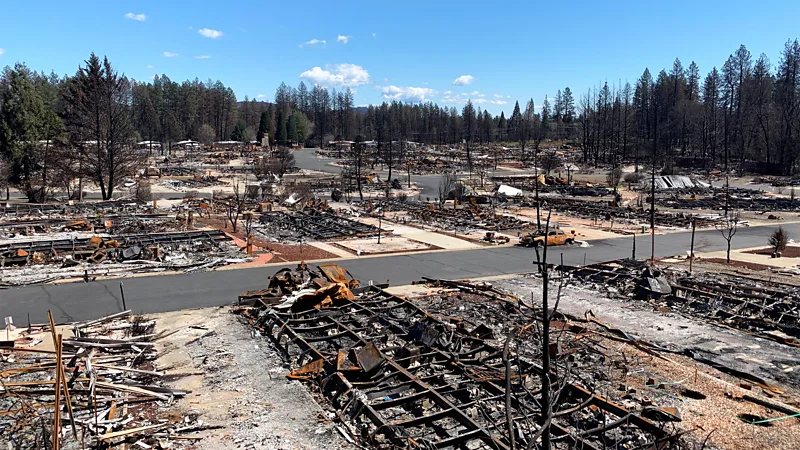In December 2017, the city of Montecito, California, faced one of its greatest challenges: the Thomas Fire. At the time, it was the largest wildfire in California history, and it was heading straight for this small, picturesque town with less than 10,000 residents. While the flames of this massive fire threatened to engulf Montecito, the community made extensive preparations over the years, allowing it to escape nearly unscathed.
The Community Prepares for the Worst
Montecito, located in Southern California, is a town known for its natural beauty and affluent residents. But in 2017, the beauty of its landscape made it highly vulnerable to wildfire. For years, the Montecito Fire Department had been proactively preparing the community for this exact scenario. The city’s strategy wasn’t about reacting at the last moment; instead, it was based on decades of foresight and careful planning.

The Montecito Fire Department began a comprehensive wildfire mitigation program in 1994. With wildfires becoming more frequent and intense due to climate change, Montecito leaders knew they needed a proactive approach. Over the years, they worked closely with residents to reduce fire risk and create a culture of preparedness.
Maeve Juarez, a wildland fire specialist with the Montecito Fire Department, explained how important this preparedness was. “Our strength lies in making sure our entire community is prepared for wildfires,” she said. Residents regularly participated in fire drills, cleaned up dry leaves and dead plants, and fortified their homes with fire-resistant materials. The fire department provided free wood-chipping services and held community clean-up days to remove potential fire fuels such as dry shrubs and overgrown vegetation.
Facing the Flames: The Thomas Fire
The Thomas Fire began in early December 2017 and quickly grew to a massive size, burning vast areas of Ventura and Santa Barbara counties. On December 16, the fire reached Montecito, further fueled by strong sundowner winds that blew through the area at speeds of up to 65 mph (105 km/h). The fire department, supported by more than 8,000 firefighters, had strategically positioned itself to protect the town. Despite the high winds and the intensity of the fire, Montecito’s preparations paid off. The flames reached above the town in the early morning and for the next 12 hours, firefighters battled spot fires and falling embers. The coordinated efforts of the community and firefighters were crucial. When night fell and the winds died down, the worst had passed for Montecito. While the Thomas Fire burned more than 282,000 acres (114,000 hectares) in California, Montecito managed to escape with relatively little damage. Only seven homes were destroyed in the fire, a remarkable result given the scale and ferocity of the fire. “Hundreds of structures benefited from alert fire suppression resources that were deployed in advance,” Juarez explained.
Building a unified approach
Montecito’s success in dealing with the Thomas Fire wasn’t just about fighting fires — it was about years of building trust, fostering a sense of community and implementing a unified approach to wildfire preparation. The community knew what to do and acted quickly. This level of coordination and cooperation is something many communities can learn from.
One key to Montecito’s success was the trust between the fire department and residents. When evacuation orders came, nearly everyone complied. This made it easier for firefighters to do their jobs without worrying about putting residents in danger. Town residents also took simple but effective steps like leaving their driveway gates open so fire trucks could easily access their properties.

The community was also lucky to have time on its side. They got a few days’ notice of the fire’s growth, allowing them to fully prepare. The fire department deployed more than 130 engines and 30 firefighters to build fire barriers, remove vegetation and place water tanks in strategic locations. This kind of preparation is key to preventing wildfires from getting out of control.
Lessons for other communities
The Montecito experience shows that preparation is key to surviving wildfires. But what can other communities learn from it? Climate change, longer dry seasons and urban sprawl are increasing the risk of wildfires in many parts of the world. Here are some steps other cities and towns can take:

Create a community plan: A good wildfire mitigation strategy involves everyone — residents, local governments and emergency services. Communities need to assess their most critical assets, such as schools, hospitals and water supply systems, and make plans to protect them.
Reduce fire fuel: This means removing dry brush, dead plants and other materials that can easily catch fire. Offer community clean-up days and free wood-chip fires
